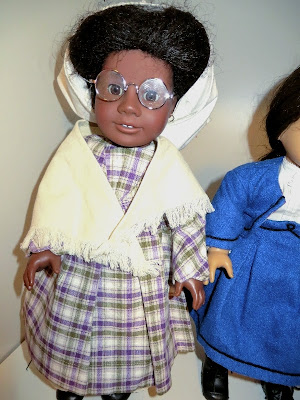Celebrating the 19th Amendment:
Time Travel to the Women's Suffrage Parade in 1913
The section section chronicles "The Seventy-Five Years' Struggle for Freedom or Justice Conquering Prejudice" by highlighting different points in the suffrage movement. This float represents "As It Was in 1840"—The first leader of the Movement for the Emancipation of Woman is standing alone, scorned by her own sex (3 figures in black representing obstruction to our progress).
Our next pioneer needs no introduction. Sojourner Truth was a formerly enslaved woman who took her freedom and advocated for abolition and women's rights.
The next generation of women's rights leaders also included Lucy Stone, abolitionist and suffragist. She was the first Massachusetts woman to earn a college degree and wrote marriage vows to reflect her egalitarian beliefs. When Lucy Stone married Henry Blackwell, she refused to take her husband’s last name. In 1850 Lucy Stone organized the first national Women’s Rights Convention in Worcester, Massachusetts.
In 1858 she reminded Americans of the “no taxation without representation” principle refusing to pay property taxes. She was punished by the impoundment and sale of the the family's household goods.
Lucy Stone went to Kansas to work on the referendum for suffrage there following the Civil War. She also served as president of the New Jersey Women Suffrage Association and helped organize the New England association.
The second wave of suffragists also included Susan B. Anthony, who needs no introduction. She died only 7 years ago. She carries a Kansas sunflower, a symbol of the women's suffrage movement. In 1867, Kansas suffragists adopted the sunflower, the state flower, as a symbol of their campaign. From then on, yellow (gold) became associated with the national women’s suffrage movement. "The color of light and life, is as the torch that guides our purpose, pure and unswerving."






No comments:
Post a Comment